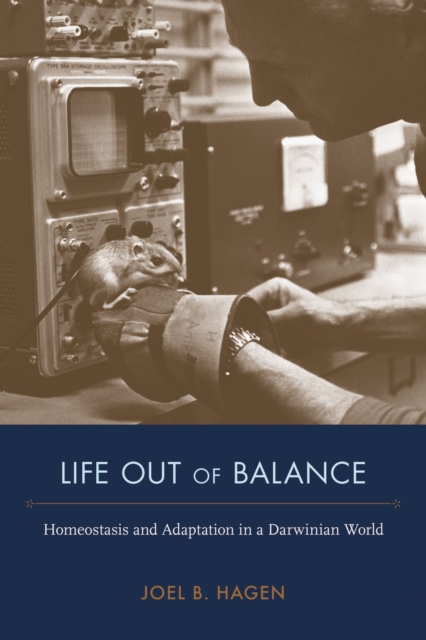
Life Out of Balance : Homeostasis and Adaptation in a Darwinian World Hardback
by Joel B. Hagen
Part of the NEXUS series
Hardback
Description
Traces historical developments in physiology, ecology, behavior, and evolutionary biology during the decades following World War II. If natural selection constitutes the first law of biology, supporters claim that homeostasis is a second law, equally important and closely related to the first.
Such claims notwithstanding, homeostasis has generated a series of controversies since it was formalized by Walter Cannon in the late 1920s.
Critics contended that Cannon took a too optimistic view of life, ignoring not only pathological deviations from normality, but also failing to adequately explain the ability of living things to respond adaptively to environmental challenges. Underlying these controversies was the unresolved problem of integrating physiology and other areas of functional biology with the emerging evolutionary synthesis of Mendelian genetics and Darwinian natural selection.
The physiological idea of homeostasis as the adaptive “fit†between the organism and its environment and the Darwinian idea of adaptation and fitness in terms of reproductive success might seem to be complementary in an unproblematic way, but historically they have had an uneasy relationship. Life Out of Balance focuses on a period in history when new ideas of self-regulation, adaptation, and fitness became central to a variety of biological disciplines.
During the decades surrounding World War II, these ideas developed in several quite different contexts and led to greater debates about the merits of such models as applied to larger systems, including society at large.
Particularly in its later cybernetic form homeostasis seemed to provide new ways of discussing balance and regulation that avoided discredited approaches of earlier champions of vitalism and mechanism.
It provided a common perspective and terminology for discussing self-regulating “systems†whether mechanical, biological, or social.
Although enormously fruitful and influential, homeostatic perspectives also generated numerous controversies when critics questioned the degree to which biological systems are characterized by balance and self-regulation.
Resolving these controversies continues to be a challenge in modern biology.
Information
-
Only a few left - usually despatched within 24 hours
- Format:Hardback
- Pages:360 pages, 13 black & white figures
- Publisher:The University of Alabama Press
- Publication Date:30/04/2021
- Category:
- ISBN:9780817320898
Information
-
Only a few left - usually despatched within 24 hours
- Format:Hardback
- Pages:360 pages, 13 black & white figures
- Publisher:The University of Alabama Press
- Publication Date:30/04/2021
- Category:
- ISBN:9780817320898










